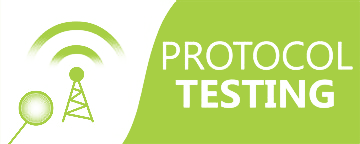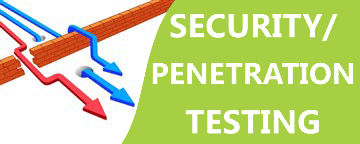Protocol Testing
About Course
PROTOCOL Testing:
Protocol testing plays a vital role in verifying communication protocols across different domains like switching, wireless, VoIP, and routing. Its primary purpose is to analyze packet structure transmitted through a network using specialized tools. This method ensures the proper functioning and integrity of protocols in diverse fields. During these tests, routers and switches are utilized to simulate parts of the equipment or systems being assessed. Protocol testing plays a vital role in establishing reliable and high-performance network connectivity. Without protocols, devices would be unable to interpret the electronic signals exchanged during network communication.
In a network, packets containing encrypted binary data are transmitted. Additionally, many protocols include a header that contains information about the sender of the message. At the start of a message, network protocols describe both the sender and recipient of the communication.
Hence, network protocols primarily focus on recognizing headers and footers to ensure smooth data transmission between devices.
QA Training Hub: The Top QA Training Institute
Providing Online Software Testing Tools and Training
QA Protocol Testing Training across various parts of India, including Bangalore, Hyderabad, Chennai, Pune, and Gurgaon We also extend our training services to the USA and the UK. Visit our website for more information and to explore the details of our program.
QA Training Hub – Online Telecom Network Protocol Testing Training Institutes in Hyderabad, Bangalore, Chennai, Mumbai, Pune, Delhi, Noida, Gurgaon, India, USA, UK, Canada.
Protocol is a set of rules or standards used in the communication networkfor transmittingand receiving data. Every protocolis unique in its data organization. It follows its own format of organizing its data while sending from source and receiving at the destination. Protocols can be classified into various types like internet protocols, network protocols, and routing protocols.
One of the renowned protocols in the World Wide Web is HTTP (Hypertext Transfer Protocol).HTTP is used to exchange information between web pages over the internet. Some of the other protocols used over the internet are FTP (File Transfer Protocol), TCP/IP (Transfer Control Protocol/Internet Protocol) and SMTP (Simple Mail Transfer Protocol).
Protocol testing is the process of understanding the behavior of protocols. It is carried out with regard to the international standards which include testing the functionality of protocols. The protocol to be tested has to pass through every phase of the testing life cycle. There are various tools available for protocol testing.
Protocol testing types:
-
- Conformance testing – system under test is checked with accordance to the standards document and ensures whether the system is working with according to the requirement specified. This is achieved through automated testing where the tests run sequentially on the specified system.
- Performance testing – verifies whether the system under test reaches the acceptable level.
- Security testing – is carried out by exposing the system under test to an input stream like random, valid and invalid input streams.
- Interoperability testing –testing the systems from various manufactures and verify whether the data transmission is occurring properly without any interrupts.
We provide training starting from the basic concepts of networking, focus on the various types of protocolsand the best testing methodology used to test each type of protocol. Our experienced trainers teach you to write effective test cases for performing protocol tests.
Course Content
FUNDAMENTALS OF DATACOMMUNICATION
-
OSI Layers
-
TCP/IP Protocol Suite
-
Internet Addresses
-
User Data Gram Protocol –UDP
-
Transmission Control Protocol –TCP
-
Internet Architecture (LAN,WAN,MAN,PAN)
-
Circuit and Packet Switching



